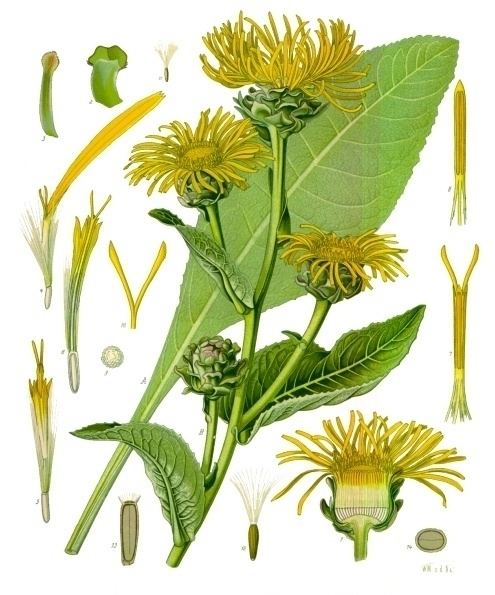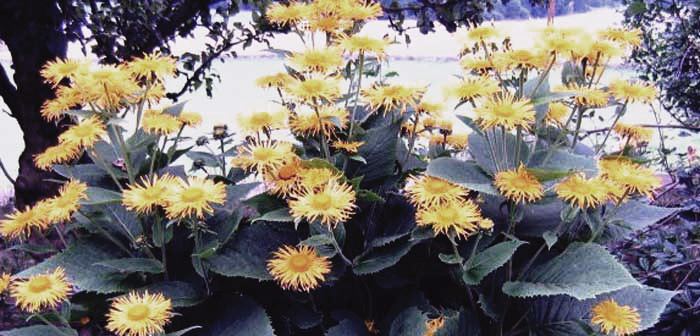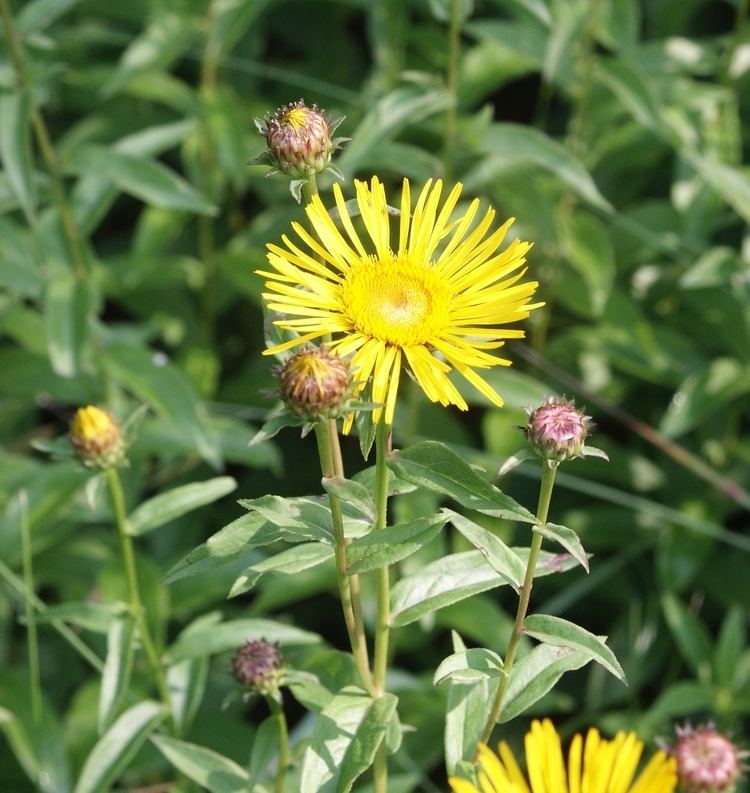Scientific name Inula | Rank Genus | |
 | ||
Lower classifications Elecampane, Inula salicina, Inula britannica, Slender‑leaved elecampane | ||
Inula helenium elecampane
Inula is a large genus of about 90 species of flowering plants in the family Asteraceae, native to Europe, Asia and Africa.
Contents

They may be annuals, herbaceous perennials or subshrubs that vary greatly in size, from small species a few centimeters tall to enormous perennials over 3 m (10 ft) tall. They carry yellow daisy-like composite flowerheads often with narrow ray-florets.

Some common characteristics include pappus with bristles, flat capitulum, and lack of chaff.
Several species are popular flowers for the garden, with cultivation going back to antiquity. The name Inula was already used by the Romans and derived from Helen of Troy fame. The smaller species are used in rock gardens and the more common larger ones, which tend to have very coarse foliage, in borders.

Inula helenium
Select species formerly in Inula

Ecology

Inula species are used as food plants by the larvae of some Lepidoptera species including case-bearers of the genus Coleophora, such as C. conyzae (recorded on I. conyzae), C. follicularis, C. inulae, and C. troglodytella.

